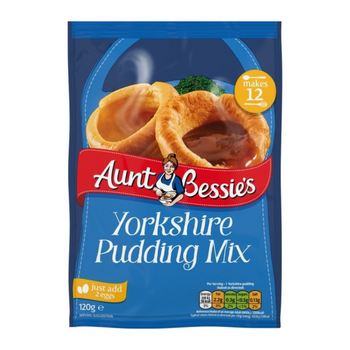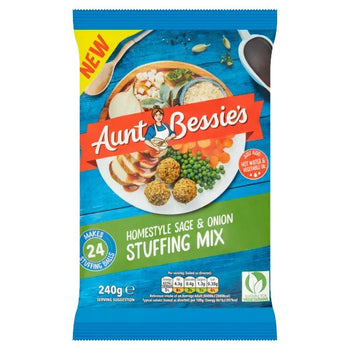My Location
-
 Christmas 2025
Christmas 2025
-
 Frozen Food
Frozen Food
-
 Baking
Baking
-
 Beans, Peas, Soups & Tins
Beans, Peas, Soups & Tins
-
 Beverages
Beverages
-
 Biscuits, Crackers & Cookies
Biscuits, Crackers & Cookies
-
 Cake & Desserts
Cake & Desserts
-
 Candy / Sweets
Candy / Sweets
-
 Crisps & Snacks
Crisps & Snacks
-
 Cereal
Cereal
-
 Chemist / Pharmacy
Chemist / Pharmacy
-
 Curry Paste, Sauces & Chutney
Curry Paste, Sauces & Chutney
-
 Desserts
Desserts
-
 Gravy, Stock & Paste
Gravy, Stock & Paste
-
 Haggis
Haggis
-
 Indian Sauces, Paste and Pickle
Indian Sauces, Paste and Pickle
-
 Jams & Preserves
Jams & Preserves
-
 Poppy Appeal
Poppy Appeal
-
 Pot Noodles & Super Noodles
Pot Noodles & Super Noodles
-
 Pickle & Relish
Pickle & Relish
-
 Sauces
Sauces
-
 Scone Mix
Scone Mix
-
 Gluten-Free / Free From
Gluten-Free / Free From
-
 Tea
Tea
-
 Tea Accessories
Tea Accessories
-
 Teapot & Tea sets
Teapot & Tea sets
-
 Tea For One
Tea For One
-
 Sugar & Creamer
Sugar & Creamer
-
 Tableware
Tableware
-
 Serveware
Serveware
-
 Plates & Trays
Plates & Trays
-
 Bowls
Bowls
-
 Cups & Saucers
Cups & Saucers
-
 Mugs
Mugs
-
 Silverware
Silverware
-
 Dinnerware - Accessories
Dinnerware - Accessories
-
 Dinnerware - For Pets
Dinnerware - For Pets
-
 Cards
Cards
-
 Victoria Eggs - Hand-Drawn UK Homeware
Victoria Eggs - Hand-Drawn UK Homeware
-
 Gifts and More
Gifts and More
-
 Jewelry & Accessories
Jewelry & Accessories
-
 Vendula London
Vendula London
-
 Sale
Sale
-
 Christmas Gifts
Christmas Gifts
-
 Games & Toys
Games & Toys
Atora Original Shredded Beef Suet. 200g
According to the history books, suet received one of its earliest mentions in a recipe dated 1617. It was noted as the key ingredient for 'Cambridge Pudding' or 'College Pudding', so-called because it was served to Cambridge students in their college halls. This was a suet pudding made with currants and minced dates, together with milk, sugar, eggs and breadcrumbs, which was then tied up in a pudding cloth and boiled. Green puddings were also a great favourite at this time. These were made from suet mixed with spice and spinach juice, from which they took their colour and were then boiled in broth. It was not until the end of the seventeenth century that puddings from a suet crust wrapped around a filling came into existence. These often contained whole apples or gooseberries and were also made using finely minced left-over meat, mixed with egg, milk and spices. As one can imagine, in those days, cooking with suet was a lengthy business because the suet had to be carefully prepared in advance. This involved removing the fat from the meat and then clarifying and chopping it ready for use. Clarifying the suet involved adding water and boiling the mixture. Any impurities were then passed into the water. The fat was then re-solidified by cooking, leaving the fat cleansed.
A FRENCHMAN TO THE RESCUE
Two hundred years later, Gabriel Hugon, a Frenchman who lived in Manchester, set up the first-ever factory to manufacture shredded suet - an act which was to revolutionize suet cooking. Hugon, who had an engraving business, was one day watching his wife tediously chopping a large piece of suet and had the idea that it would be so much easier if you were able to buy suet already chopped. He subsequently sold his engraving business and in 1893 founded the Atora suet making factory in Openshaw, Manchester, manufacturing ready shredded suet - one of the first 'convenience' food products available. It was the largest factory of its kind in the world. It is believed that the name "Atora" was derived from the word toro, the Spanish word for bull. This was clearly linked to the fact that suet comes from beef cattle. In fact, between 1893 and the early part of World War II, Hugon used this very fact to publicise the brand. Atora suet was transported around the country in colourfully painted wagons bearing the Atora name and pulled by six pairs of Hereford bullocks. It was known to be one of the best publicity stunts carried out by a British firm in its time - long before 'the marketing concept' was officially discovered! Later the wagons joined the famous Chipperfield's Circus and took part in parades up and down the country.


 Christmas 2025
Christmas 2025
 Frozen Food
Frozen Food
 Baking
Baking
 Beans, Peas, Soups & Tins
Beans, Peas, Soups & Tins
 Biscuits, Crackers & Cookies
Biscuits, Crackers & Cookies
 Candy / Sweets
Candy / Sweets
 Crisps & Snacks
Crisps & Snacks
 Chemist / Pharmacy
Chemist / Pharmacy
 Desserts
Desserts
 Gravy, Stock & Paste
Gravy, Stock & Paste
 Haggis
Haggis
 Indian Sauces, Paste and Pickle
Indian Sauces, Paste and Pickle
 Jams & Preserves
Jams & Preserves
 Poppy Appeal
Poppy Appeal
 Pot Noodles & Super Noodles
Pot Noodles & Super Noodles
 Scone Mix
Scone Mix
 Gluten-Free / Free From
Gluten-Free / Free From
 Tea Accessories
Tea Accessories
 Teapot & Tea sets
Teapot & Tea sets
 Tea For One
Tea For One
 Sugar & Creamer
Sugar & Creamer
 Tableware
Tableware
 Serveware
Serveware
 Plates & Trays
Plates & Trays
 Bowls
Bowls
 Cups & Saucers
Cups & Saucers
 Mugs
Mugs
 Silverware
Silverware
 Dinnerware - Accessories
Dinnerware - Accessories
 Dinnerware - For Pets
Dinnerware - For Pets
 Victoria Eggs - Hand-Drawn UK Homeware
Victoria Eggs - Hand-Drawn UK Homeware
 Jewelry & Accessories
Jewelry & Accessories
 Sale
Sale
 Christmas Gifts
Christmas Gifts







